Migration
The Ringing Scheme
The BTO Ringing Scheme has been collecting data on the movements of individual birds marked in Britain and Ireland since 1909. Now there are well over 2,500 ringers catching nearly a million individual birds each year. Although the focus of the Ringing Scheme is now on population dynamics, we continue to collect much valuable information on movements, through the use of standard metal rings, as well as colour marks and other tracking methods such as geolocators and radios. We work closely with other ringing schemes around the world and are heavily involved in the work of EURING(The European Union for Bird Ringing)
The Migration Mapping Tool
The Migration Mapping Tool was developed to assess the risk of Avian Influenza being moved by wild birds. Using reports of 21 species of wild, ringed birds from across Europe it provides a summary of their movements of between any combination of areas in Europe. The species covered are those which it was judged were the most likely to carry Avian Influenza. The tool was developed by EURING, using data from the member ringing schemes. Although the Tool was produced to help to assess possible risks of Avian Influenza being transferred by migrating birds, it is a fascinating resource for anyone who would like to know more about migration, providing a comprehensive series of maps, tables and back ground information. It is freely available to use.
Tracking
With the development of new technologies, it is now possible to track even very small passerines which weigh less than 20g. If we are going to understand why migrants' populations are changing, it is essential to have a good understanding of migrant stopover sites and where birds spend the winter. Bird ringing has given us a huge amount of information about movements within Europe but, often, recovery rates outside western Europe are so low for small passerines that it is difficult to infer very much about the routes and timing of migration. By tracking individual birds that we can get the detailed information required to understand how drivers such as climate or land use change might be affecting a species.
We are currently working with the Swiss Ornithological Institute on a Europe-wide study of Nightingales. The SOI have produced geolocators for use on small passerines and have opened up all kinds of exciting possibilities. Originally developed on albatrosses by the British Antarctic Survey, the SOI have produced miniaturised versions.
Geolocators work by recording light levels every few minutes and, with an internal clock, it is possible to work out the local time of midday and midnight. These data are stored on a chip and once the bird is re-caught and the data downloaded, we can calculate the longitude and latitude to an accuracy of c. 70 km.
Our Nightingale was ringed in the Fens in Cambridgeshire in May 2009 and then recaught there a year later. The data on its chip was downloaded by the SOI and they have kindly provided a preview of one of our bird's remarkable journeys in advance of publication of the study's wider findings. It left the UK at the end of July and most likely stopped over in Portugal for two weeks at the beginning of September. Here we lost the signal as around the equinoxes the locations become very unreliable. By 20 September is was in West Africa and stayed in Western Sahara until the end of October. It then moved to central-west Senegambia before moving to its final wintering location on the Guniea-Sierra Leone border in mid December.
This remarkable result has given a fascinating insight into this bird's life. The next step is to repeat this with more individuals and to try and identify important staging areas where we can focus our research effort.
For further information please contact Phil Atkinson.
The Migration Atlas
The Migration Atlas brings together information from reports of ringed birds with other sources of information on movements to produce a comprehensive reference book on the movements of birds. Experts have written the 188 detailed accounts of species that spend all or some of the year in Britain & Ireland. Maps of movements are provided to supplement the descriptions. Background information about the data used is presented and there is a discussion of possible threats to each species and the current gaps in our knowledge about them. In addition, introductory and closing chapters cover the study of movements, the BTO Ringing Scheme, migration, migration patterns and the future of migration studies and conservation and there is a series of detailed appendices on distances moved, breeding and wintering areas etc. The book is invaluable for conservation practitioners as well as being a fascinating read for anyone interested in birds and their movements.
Wernham, C.V., Toms M.P., Marchant, J.H., Clark, J.A., Siriwardena, G.M. & Baillie, S.R. (eds). (2002) The Migration Atlas: movements of the birds of Britain and Ireland. T. & A.D. Poyser, London.
The analyses for the project were funded by the Heritage Lottery Fund, ringers, other BTO members, charitable trusts and commercial sponsors.
The image on the right shows the international Swallow movements - red in Britain in autumn, black in Britain in spring.

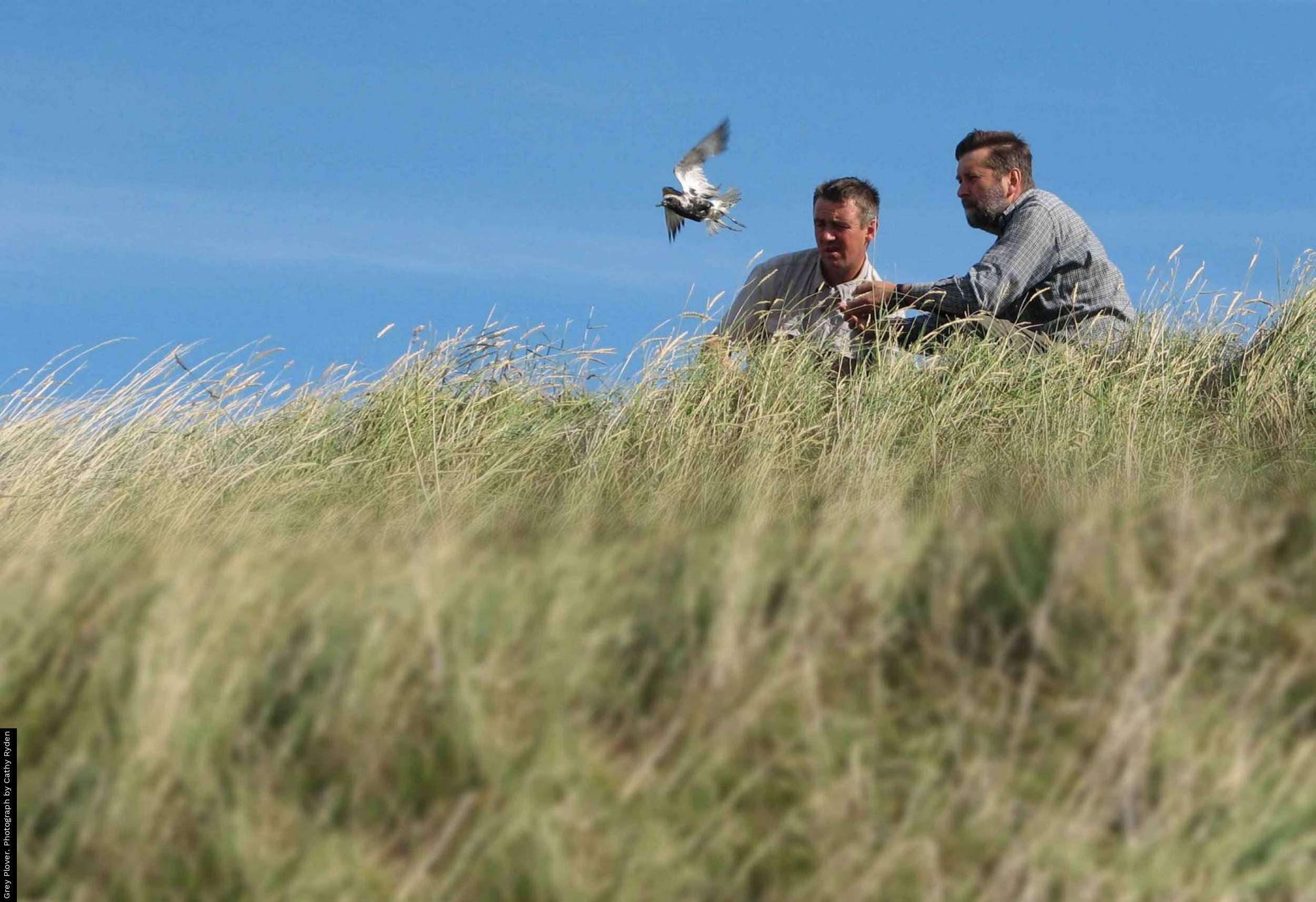
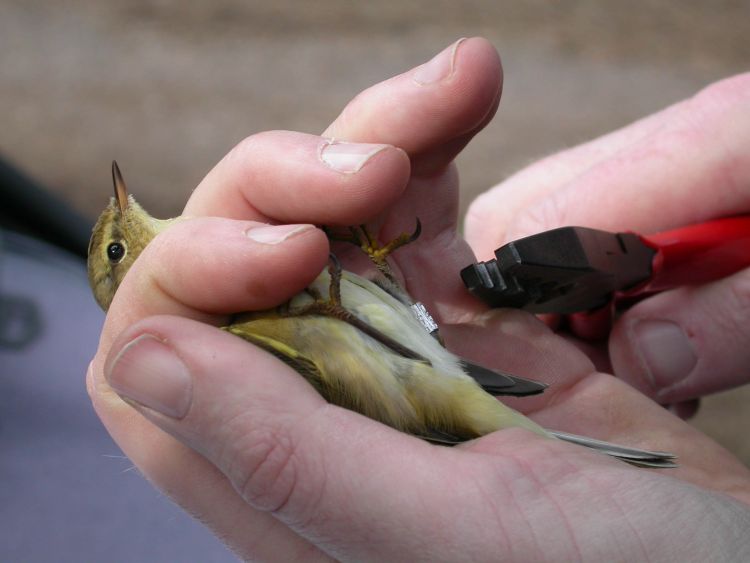
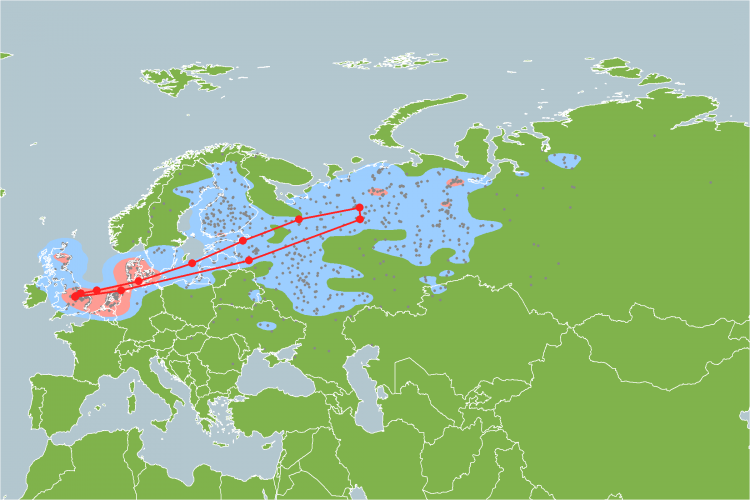
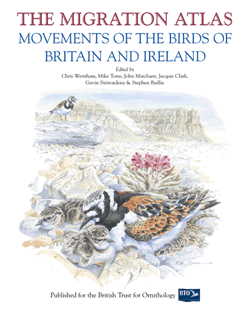
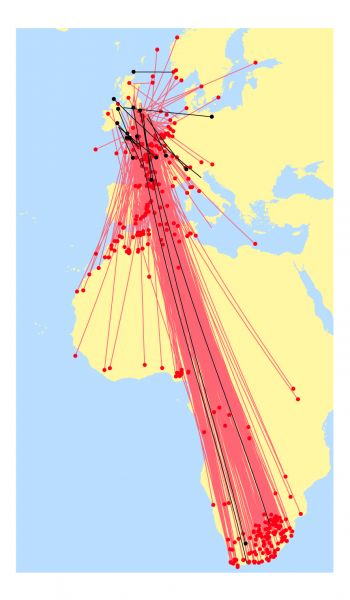

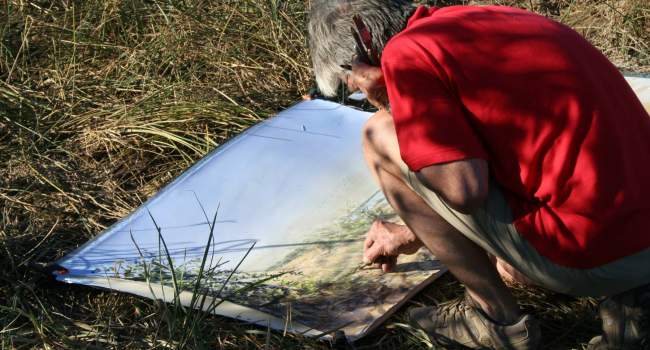
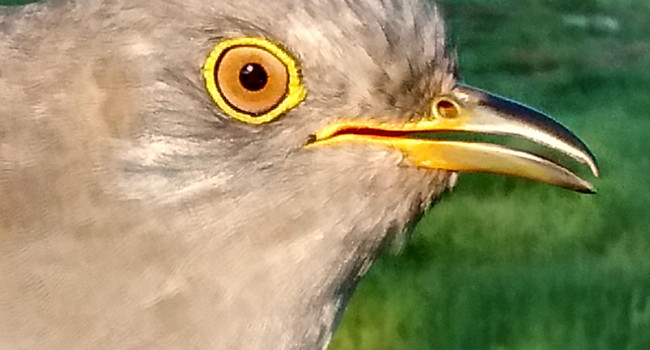

Share this page